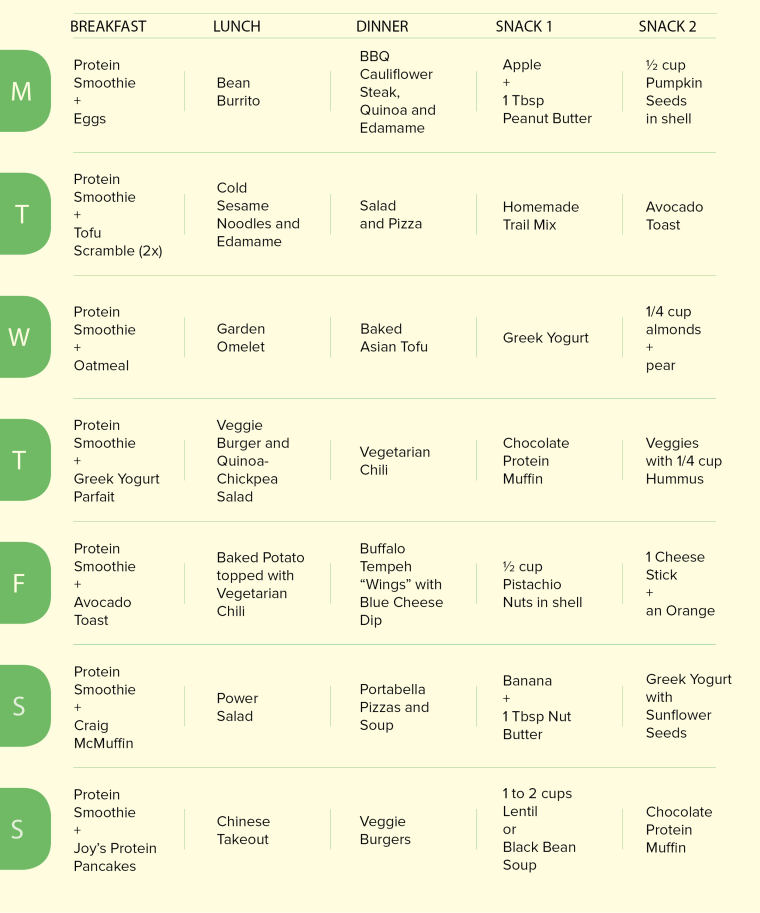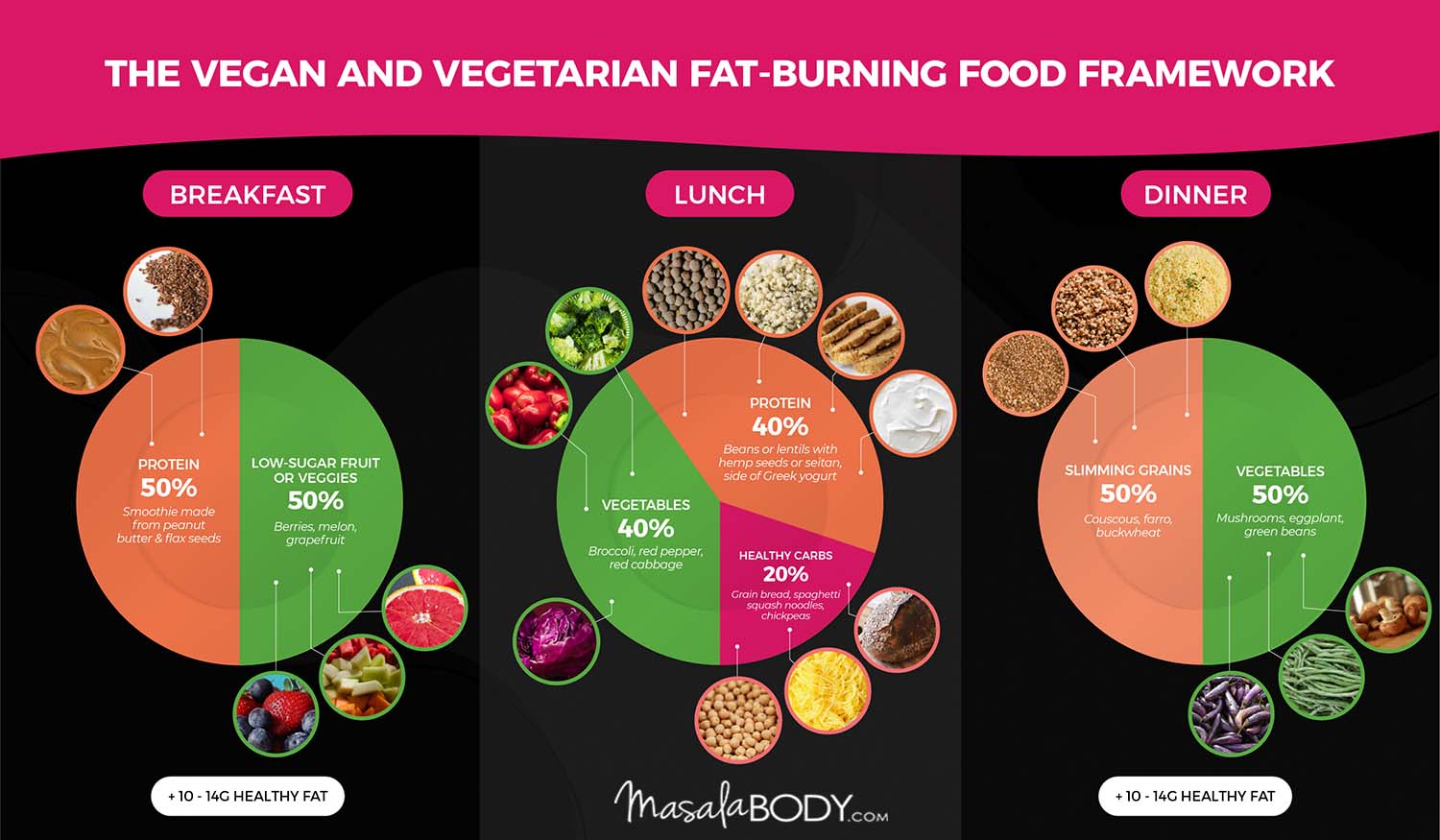Are you tired of trying diet after diet without seeing the results you want? If you’re looking to shed some pounds while embracing a healthier lifestyle, a vegan meal plan for fat loss might be the answer you’ve been searching for.
Imagine nourishing your body with vibrant, plant-based foods that not only help you lose weight but also leave you feeling energized and refreshed. In this guide, you’ll discover how a vegan meal plan can be your secret weapon in achieving your fat loss goals.
Get ready to unlock the power of plants and transform your life, one delicious meal at a time. Stick around, because this might just be the most impactful change you make for your health and well-being.
Benefits Of A Vegan Diet For Fat Loss
A vegan diet offers various benefits for those seeking fat loss. This plant-based approach is rich in nutrients and low in calories. It provides a sustainable way to shed unwanted pounds. Let’s explore how a vegan diet can aid in effective fat loss.
Increased Fiber Intake
Vegan diets are high in fiber. Fiber keeps you full longer. It curbs hunger and reduces overall calorie intake. This can lead to effective fat loss over time.
Lower Caloric Density
Plant-based foods have lower caloric density. You can eat larger portions without extra calories. This helps in maintaining a calorie deficit, essential for fat loss.
Improved Metabolism
Vegan diets can boost metabolism. They are rich in complex carbohydrates. These carbohydrates enhance energy expenditure and promote fat burning.
Reduced Saturated Fats
Vegan diets limit saturated fats. Lower saturated fat intake reduces body fat accumulation. This supports a healthier body composition.
Enhanced Insulin Sensitivity
Plant-based foods improve insulin sensitivity. Better insulin sensitivity aids in fat breakdown. This can help in reducing body fat percentage.
Essential Nutrients For Vegans
A vegan meal plan focused on fat loss should include essential nutrients like protein, iron, and vitamin B12. Plant-based sources such as legumes, tofu, and fortified cereals help maintain muscle while reducing weight. Balanced meals ensure energy and nutrition without excess calories.
Embarking on a vegan meal plan for fat loss is not just about cutting calories. It’s about ensuring you nourish your body with all the essential nutrients it needs to thrive. As you dive into this journey, understanding where to find key nutrients is crucial. Let’s break down how you can enrich your diet with the necessary proteins, healthy fats, vitamins, and minerals.Protein Sources
Protein is vital for muscle repair and growth, especially when you’re losing fat. As a vegan, you have a variety of protein-rich options. Legumes such as lentils, chickpeas, and black beans are excellent choices. They are not only high in protein but also in fiber, keeping you full for longer. Tofu and tempeh are versatile and can be flavored to suit any dish. They are also rich in calcium and iron, adding to their nutritional value. Ever tried quinoa? It’s a complete protein, meaning it contains all nine essential amino acids. Include it in your salads or as a side dish for an extra protein punch.Healthy Fats
Don’t shy away from fats! Healthy fats are essential for brain function and hormone regulation. Avocados are a delicious way to add healthy fats to your meal. Mash them on toast, add them to salads, or blend them into smoothies. Nuts and seeds like almonds, chia seeds, and flaxseeds are packed with omega-3 fatty acids. They’re great for snacking or as a topping on your morning oatmeal. Are you using olive oil in your cooking? It’s a heart-healthy option that enhances the flavor of your dishes. Use it for sautéing vegetables or as a salad dressing.Vitamins And Minerals
To support your overall health, it’s crucial to get a variety of vitamins and minerals. Leafy greens such as spinach and kale are rich in vitamins A, C, and K. They are also a great source of calcium. Add them to smoothies or enjoy them in a fresh salad. B12 is one vitamin you need to pay attention to, as it’s mostly found in animal products. Consider fortified foods like plant-based milks and cereals or take a supplement after consulting with a healthcare provider. Iron is vital for energy levels. Lentils, chickpeas, and fortified cereals can help meet your needs. Pair them with vitamin C-rich foods like bell peppers to enhance absorption. Are you getting enough of these nutrients in your vegan meal plan? Adjusting your diet to include these foods can make a significant difference in your fat loss journey. Focus on balance and variety, and your body will thank you!Caloric Needs And Deficit
Understanding your caloric needs is crucial for fat loss on a vegan meal plan. This involves knowing how many calories your body requires daily and creating a deficit. A caloric deficit means consuming fewer calories than your body burns, leading to weight loss. Let’s dive into how to calculate and create this deficit effectively.
Calculating Caloric Requirements
First, determine your Basal Metabolic Rate (BMR). This is the number of calories your body needs at rest. Use online calculators for a quick estimate. Consider factors like age, gender, weight, and activity level. Multiply your BMR by your activity factor to find your Total Daily Energy Expenditure (TDEE). This shows how many calories you burn each day. Knowing your TDEE helps in planning your meals.
Creating A Caloric Deficit
To lose fat, consume fewer calories than your TDEE. A safe deficit is 500-1000 calories less daily. This leads to losing about 1-2 pounds a week. Focus on nutrient-dense foods. Choose vegetables, fruits, whole grains, and plant-based proteins. These foods offer vitamins and minerals with fewer calories. Monitor portion sizes. Use smaller plates or bowls to reduce intake. Track your progress regularly. Adjust your meal plan if necessary to maintain the deficit.

Credit: www.today.com
Sample Vegan Meal Plan
Adopting a vegan meal plan for fat loss can be effective. It focuses on whole foods, rich in nutrients, and low in calories. This sample meal plan offers delicious, easy-to-prepare meals. Each meal keeps you full while helping you shed pounds. Eating plant-based foods can make you feel energetic and satisfied. Let’s explore some tasty options for breakfast, lunch, dinner, and snacks.
Breakfast Options
Start your day with a filling vegan breakfast. Try oatmeal topped with fresh berries and a sprinkle of chia seeds. Another option is a smoothie made with spinach, banana, and almond milk. Avocado toast on whole-grain bread with a dash of lemon juice is tasty too. These meals provide energy and keep hunger at bay.
Lunch Ideas
Lunch can be vibrant and nutritious. A chickpea salad with mixed greens, cherry tomatoes, and cucumber is refreshing. Add a squeeze of lemon for extra flavor. Another choice is a quinoa bowl with black beans, corn, and avocado. Wraps filled with hummus, lettuce, and roasted veggies are convenient and satisfying.
Dinner Suggestions
Dinner should be hearty yet healthy. A vegetable stir-fry with tofu and broccoli over brown rice is delicious. Lentil soup with carrots, celery, and spices warms you up. Try a stuffed bell pepper with quinoa, spinach, and tomato sauce. These dishes are full of flavor and nutrients.
Snacks And Desserts
Keep snacks simple and healthy. A handful of almonds or walnuts provides a quick energy boost. Fresh fruit like apples or bananas makes for a sweet treat. For dessert, a small bowl of mixed berries satisfies sweet cravings. Dark chocolate squares can be enjoyed in moderation. These options keep your diet on track.
Meal Prep Tips
Crafting a vegan meal plan for fat loss involves choosing nutrient-rich ingredients. Focus on whole grains, legumes, and plenty of vegetables. Batch cooking meals in advance helps maintain portion control and saves time, ensuring you stick to your healthy eating goals.
Planning meals in advance is a game-changer when you’re on a vegan meal plan for fat loss. It helps you stay on track, saves time, and ensures you have delicious, nutrient-rich meals ready to go. If you’re looking to make meal prep a breeze, these tips will guide you toward a more efficient routine.Batch Cooking
Batch cooking is your best friend in meal prep. Cook large quantities of staples like grains, beans, and roasted vegetables at once. This way, you always have the base for a meal on hand. Think about cooking a pot of quinoa or brown rice to use throughout the week. You can easily transform these into stir-fries, salads, or hearty bowls. Consider making a big batch of soup or stew. Store it in individual portions for easy grab-and-go lunches or dinners.Time-saving Techniques
Streamline your meal prep by organizing your kitchen space. Keep frequently used items like spices and measuring cups within reach. Use time-saving appliances like a rice cooker or an Instant Pot. They can cut down cooking time significantly and require minimal supervision. Plan your meals around similar ingredients. This reduces the time spent on preparation and ensures nothing goes to waste. Meal prep doesn’t have to be a chore. Do you find it challenging to stick to your vegan meal plan without it? By incorporating these strategies, you’ll find that staying on track is not only achievable but also enjoyable.Incorporating Exercise
Adding exercise to a vegan meal plan boosts fat loss. It’s not just about the food. Exercise plays a crucial role. It helps burn calories and builds muscle. This enhances overall health. Exercise also improves mood and energy levels. Let’s explore two types of workouts. Each supports your fat loss journey.
Cardio Workouts
Cardio workouts help burn calories fast. Running, cycling, and swimming are great options. They increase your heart rate. This leads to more fat burning. Start with 20 minutes a day. Gradually increase the time. Consistency is key. Cardio also improves heart health. So, lace up your shoes. Get moving today.
Strength Training
Strength training builds muscle. More muscle means more calories burned. Even while resting. Use weights or bodyweight exercises. Push-ups, squats, and lunges are effective. Aim for two to three sessions weekly. Don’t worry about bulking up. Muscle boosts metabolism. It helps you stay lean and strong.
Monitoring Progress
Tracking changes in weight can show the success of a vegan meal plan for fat loss. Regular checks help adjust meals for better results. Simple steps lead to healthy weight management.
Embarking on a vegan meal plan for fat loss can be a rewarding journey, but monitoring your progress is crucial to ensuring success. It’s not just about reaching your goals; it’s about understanding what works and what needs tweaking. Regularly checking in on your progress will help you stay motivated and make informed decisions about your diet and lifestyle. ###Tracking Weight Loss
Keeping tabs on your weight is a straightforward way to measure progress. Weigh yourself consistently, ideally at the same time each day. This eliminates fluctuations due to water retention or other factors. Use a simple spreadsheet or a dedicated app to log your weight. These tools can help you identify trends over time. Seeing a downward pattern can be incredibly motivating. But remember, the scale isn’t everything. It doesn’t reflect muscle gain or fat loss accurately. Consider using a tape measure or taking progress photos for a more comprehensive view. ###Adjusting The Plan
If you’re not seeing the results you want, it might be time to tweak your meal plan. Start by evaluating your calorie intake. Are you consuming more than you’re burning? Review your meals. Are they balanced with enough protein, healthy fats, and carbohydrates? Sometimes, small adjustments can make a big difference. Reflect on your physical activity. Could you add a few more workouts or increase their intensity? Remember, diet and exercise go hand in hand for effective fat loss. Don’t be afraid to experiment. Try new recipes or meal prep techniques to keep things exciting. Have you considered consulting a nutritionist to refine your plan? Monitoring progress is about learning and adapting. Your journey is unique, and your approach should be too.
Credit: masalabody.com
Common Mistakes To Avoid
Skipping protein sources can hinder vegan fat loss. Focus on balanced meals with legumes and nuts. Don’t rely solely on carbs; include healthy fats to maintain energy levels.
Navigating a vegan meal plan for fat loss can be challenging. Many people fall into common traps that hinder their progress. Understanding these pitfalls can make your journey smoother and more effective. Let’s explore some common mistakes and how to avoid them.Nutrient Deficiencies
A vegan diet can lack certain essential nutrients. Iron, vitamin B12, and omega-3 fatty acids are often missing. These nutrients are vital for energy and overall health. Without them, weight loss can stall. Include fortified foods and supplements in your diet. Focus on diverse plant-based foods. This ensures you get all necessary nutrients.Overeating Vegan Junk Food
Vegan does not always mean healthy. Many vegan foods are processed and calorie-dense. Chips, cookies, and vegan ice creams are examples. They can lead to weight gain if eaten in excess. Choose whole foods like fruits, vegetables, and grains. They are more filling and nutrient-rich. Always read food labels and be mindful of portions.Staying Motivated
Staying motivated on a vegan meal plan for fat loss can be challenging. Many people start with enthusiasm but lose steam over time. Understanding your goals and having support can make a big difference. This section will help you stay on track.
Setting Realistic Goals
Set small, achievable goals to maintain motivation. Start with simple changes in your diet. Replace one meal with a vegan option each day. Track your progress to see improvements. Celebrate small victories to keep your spirits high.
Consider your lifestyle and daily routine. Align your goals with what you can realistically achieve. This approach prevents frustration and boosts your confidence.
Finding A Support System
Surround yourself with people who support your goals. Join online forums or local vegan groups. Share your journey and learn from others. Having a community can inspire you and provide useful tips.
Talk to friends and family about your goals. They can offer encouragement and help you stay accountable. A support system makes the journey less lonely and more enjoyable.

Credit: www.today.com
Frequently Asked Questions
What Are The Benefits Of A Vegan Fat Loss Plan?
A vegan fat loss plan can boost metabolism and improve digestion. It emphasizes whole foods, reducing calorie intake naturally. Plant-based diets are rich in fiber, promoting satiety and reducing hunger. Nutrient-dense foods provide essential vitamins and minerals, supporting overall health during weight loss.
Can You Lose Weight On A Vegan Diet?
Yes, a vegan diet can promote weight loss effectively. By focusing on whole, plant-based foods, you reduce calorie intake. High fiber content in vegetables and legumes helps you feel full longer. Avoiding processed foods and animal fats further aids in shedding excess weight.
How Does Fiber Aid In Fat Loss?
Fiber aids fat loss by promoting satiety and reducing overeating. It slows digestion, stabilizing blood sugar levels and preventing insulin spikes. High-fiber foods like fruits, vegetables, and grains help control appetite. This leads to consuming fewer calories and supporting weight loss efforts.
Are Vegan Diets High In Protein?
Vegan diets can be high in protein with careful planning. Legumes, tofu, and quinoa are excellent protein sources. They provide essential amino acids for muscle maintenance. Incorporating diverse plant proteins ensures adequate intake, supporting fitness goals during fat loss. Proper meal planning is key for balanced nutrition.
Conclusion
Choosing a vegan meal plan can help with fat loss. It offers many health benefits. You eat more fruits, vegetables, and whole grains. These foods keep you full and satisfied. They are also low in calories. This helps you manage your weight better.
You also reduce animal product intake. This may lower cholesterol and improve heart health. Staying consistent is key. Plan your meals ahead. Enjoy the journey to a healthier you. Remember, small changes make a big difference. Keep exploring new vegan recipes.
Stay motivated and committed. Your body will thank you.
{ “@context”: “https://schema.org”, “@type”: “FAQPage”, “mainEntity”: [ { “@type”: “Question”, “name”: “What are the benefits of a vegan fat loss plan?”, “acceptedAnswer”: { “@type”: “Answer”, “text”: “A vegan fat loss plan can boost metabolism and improve digestion. It emphasizes whole foods, reducing calorie intake naturally. Plant-based diets are rich in fiber, promoting satiety and reducing hunger. Nutrient-dense foods provide essential vitamins and minerals, supporting overall health during weight loss.” } } , { “@type”: “Question”, “name”: “Can you lose weight on a vegan diet?”, “acceptedAnswer”: { “@type”: “Answer”, “text”: “Yes, a vegan diet can promote weight loss effectively. By focusing on whole, plant-based foods, you reduce calorie intake. High fiber content in vegetables and legumes helps you feel full longer. Avoiding processed foods and animal fats further aids in shedding excess weight.” } } , { “@type”: “Question”, “name”: “How does fiber aid in fat loss?”, “acceptedAnswer”: { “@type”: “Answer”, “text”: “Fiber aids fat loss by promoting satiety and reducing overeating. It slows digestion, stabilizing blood sugar levels and preventing insulin spikes. High-fiber foods like fruits, vegetables, and grains help control appetite. This leads to consuming fewer calories and supporting weight loss efforts.” } } , { “@type”: “Question”, “name”: “Are vegan diets high in protein?”, “acceptedAnswer”: { “@type”: “Answer”, “text”: “Vegan diets can be high in protein with careful planning. Legumes, tofu, and quinoa are excellent protein sources. They provide essential amino acids for muscle maintenance. Incorporating diverse plant proteins ensures adequate intake, supporting fitness goals during fat loss. Proper meal planning is key for balanced nutrition.” } } ] }
